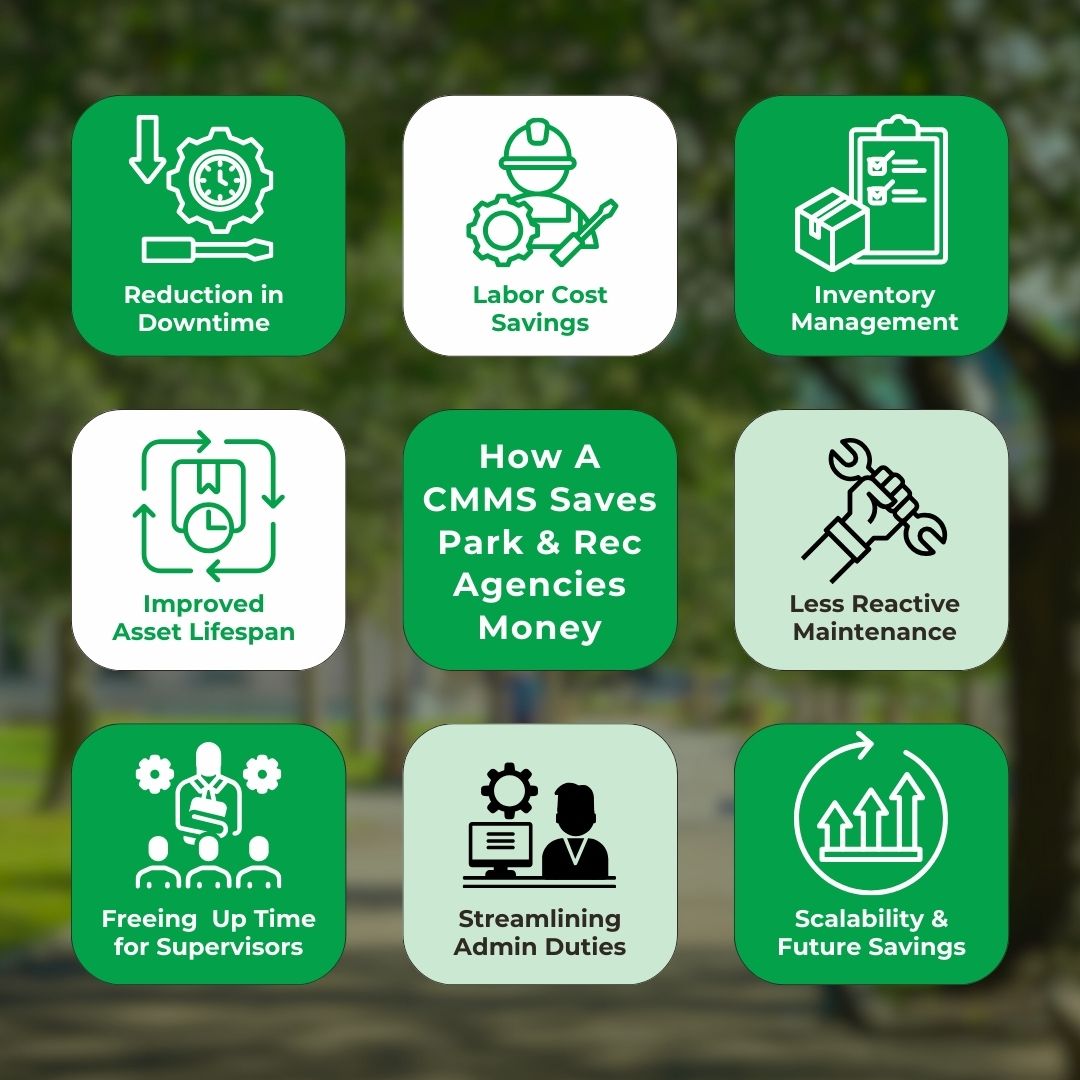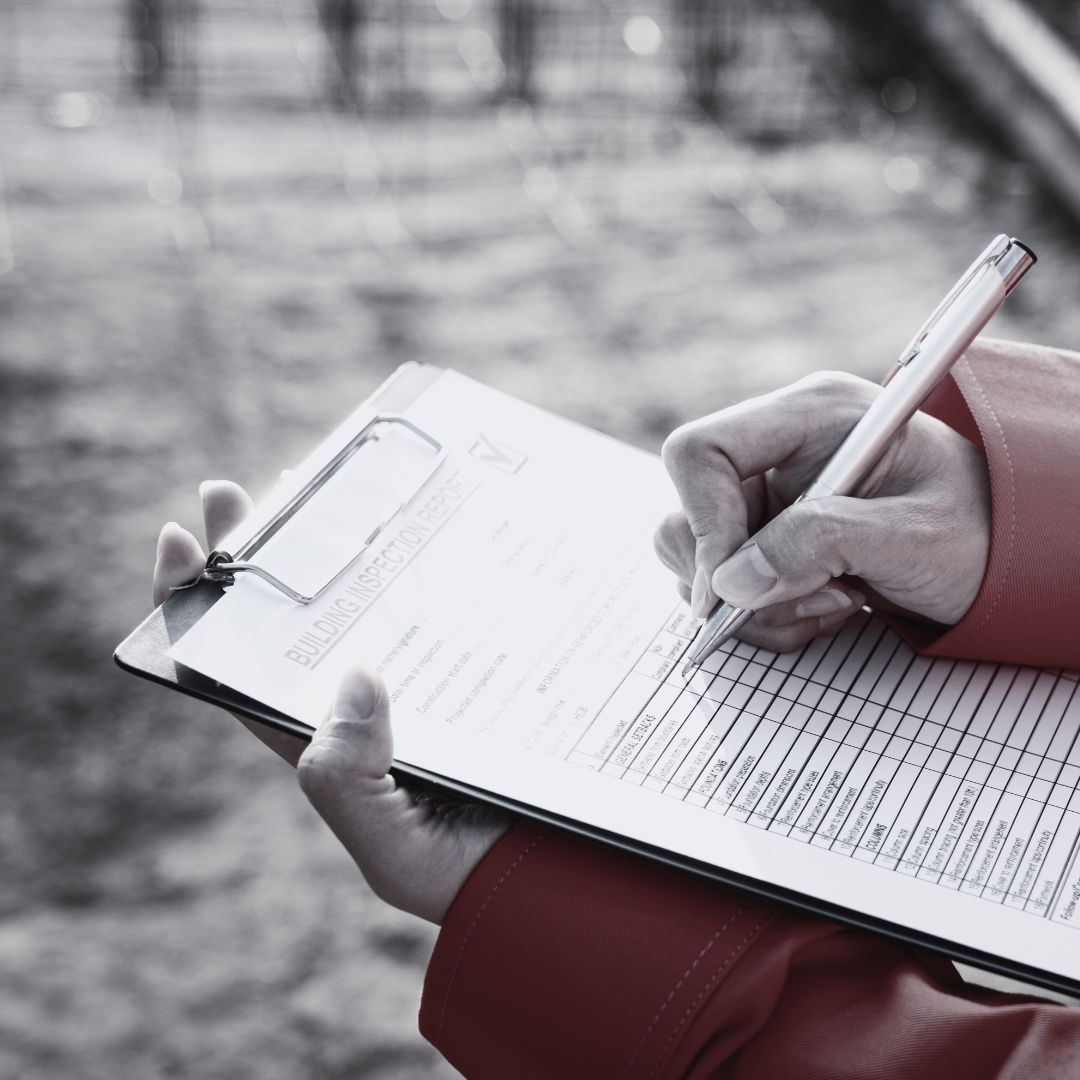
At some point, when deciding if software can help improve the operations of your maintenance department, you’ll be faced with some questions.
Is computerized maintenance management system (CMMS) software worth it for my parks and recreation agency?
After all, the software is an investment for your agency and maintenance team. And, as with any investment, you’ll want to see it pay off–the quicker, the better.
CMMS software can automate some processes and get your maintenance team more organized. Will it really save enough money to be worth it?
You may be surprised at how quickly you start seeing a return on your investment.
But…does a parks and recreation agency really need this type of software?
Productive Parks is CMMS software made exclusively for parks and recreation agencies by parks and recreation professionals. Let’s review how Productive Parks can save your agency thousands of dollars a year–well over what you would pay for it.
You may get some resistance…Why not stick with the old ways of doing things?
Here are some reasons it pays to change.

Reduction in Downtime
When equipment fails, it throws off recreation programming and maintenance schedules. Downtime costs your agency money in repair costs and reduced revenues.
Here’s an example:
It’s summer, and a lot of people are headed to your waterpark to cool off.
But there’s a problem. The weekend staff failed to maintain the pool filters correctly, so water hasn’t been circulating properly. Poor water quality means the waterpark needs to be closed for the day until the levels are safe again.
The closing not only gives the public a bad impression but also costs you a day of revenue—which can amount to thousands of dollars depending on the size of your facility.
When a seasonal aquatics facility shuts down for a day, you lose more than 1% of the annual revenue for that site. The more that happens, the more it costs your agency.
And the whole situation was preventable.
Productive Parks allows supervisors to attach files such as standard operating procedures, detailed instructions, and photos so staff can clearly understand their tasks.
Labor Cost Savings
A CMMS can help reduce costs by automating task scheduling and providing centralized communication. Simple, time-saving measures add up to significant savings.
For example, let’s say automated task scheduling saves a team about 20 minutes a day. Staff log into Productive Parks and quickly see what they need to do for the day. When everyone’s day is clearly plotted out, a half-hour morning meeting can be reduced to 10 minutes.
That’s about 4% of a staff’s day.
Now, 4% doesn’t seem like a huge number, but the savings add up.
If you have a maintenance team of 10 staff that make about $40 an hour (benefits included),
Shaving 20 minutes from a morning check-in meeting and getting to work earlier can save around $8,000 a quarter.
And this is only one simple, time-saving way a CMMS can help.
Digital Records Save Time
Picture these scenarios…
The Old Way

A maintenance worker finds a paper playground inspection by searching an old binder in the shop and makes copies. (5 minutes)
He fills out the paper form while completing the inspection in the field. (15 minutes)
After returning to the shop, he has to fill out a separate work request for some loose railings noticed during the inspection. The form needs to be copied and put in the appropriate places. (5 minutes)
Then, the completed inspection needs copies and to be filed accordingly. (5 minutes)
Later, the maintenance manager returns from a meeting and looks at all the new papers in her inbox. After sifting through some notes about issues the recreation facility is having, she sees the playground inspection and the work order. She calls one of her staff to fix the railing, but there’s no answer. She finally gets hold of another staff who says he can take care of it later in the day. (10 minutes)
Now…Using a CMMS
The maintenance worker completes a customized inspection using his work phone. The CMMS automatically creates a work order based on the inspection results. The maintenance manager gets notified immediately about the loose rails. She assigns the work order as a task to a staff member who is available for the day. The staff immediately receives a text alert about the new task assigned.
The entire process takes about 10 minutes.
So, comparing the two examples, the old way of doing things took about 30 minutes more than using maintenance management software.
Digital inspections and automatically generated work orders can practically pay for the software! Staff can complete inspections for playgrounds, vehicles, facilities, pools, grounds, and any other assets they want to monitor.
And that doesn’t even consider the cost savings of catching minor problems early before they become expensive repairs or safety hazards.
Inventory Management
A CMMS can help reduce the risk of ordering excess inventory or running out of items unexpectedly. The software helps keep track of what you have and where it is.
Think about when something runs out unexpectedly. Someone has to alter their schedules to shop.
For example, the toilet paper supply ran out because a seasonal staff had to use more than usual last week due to some vandalism in a restroom. That staff never reported the extra paper taken from the supply closet.
Now, one of your full-time staff has to take a half hour out of their day to pick up a couple of cases of toilet paper that cost 28% more than what you get from your wholesaler. Assuming you usually pay $35.00 for a case of toilet tissue, one case costs your agency at least $64.80 with the labor costs and price markup—almost double!
And each time staff has to do that, it’s cutting into your budget.
The inventory management system within Productive Parks would have prevented the added expense. The software lets your staff report what supplies they used to complete a task. You’ll be alerted to reorder when those supplies reach a predetermined level.
Improved Asset Performance and Lifespan
Regular inspections and preventative maintenance can increase the lifespans of your assets. The longer an asset functions at its best, the better investment it is.
Say you purchase a new Ford F-350 Super Duty pickup for $47,000 and expect to use it for the next ten years. By scheduling regular inspections and maintenance with Productive Parks, you extend the lifespan by 2 years.
If that vehicle lasts 10 years, the annual cost per year is $4,700. If you use the truck for 12 years, the annual cost is $3,917. That’s a yearly savings of $783.
Now, picture that savings for all of your fleet and equipment.
Preventative Maintenance vs Reactive Maintenance
It’s no secret…preventative maintenance saves money.
It’s estimated preventative maintenance can save an agency 12% to 18% of the costs usually associated with repairs and reactive maintenance.
Think of some of the larger repair bills your agency paid recently. How many of those repairs could have been avoided (or at least caught earlier), saving your agency money?
Productive Parks makes scheduling, tracking, and reviewing preventative maintenance tasks easier. Automated scheduling tasks allow maintenance plans to come to life, moving from spreadsheets to your staff’s daily to-do lists. You will know what work was done and what may have been overlooked.
Freeing Up Time for Supervisors
We know it all too well: Something unexpected happens in a park or facility. The maintenance manager needs to shuffle schedules or reprioritize tasks, which takes time away from everything else they need to do.
Imagine the time saved if switching schedules didn’t require multiple texts and calls. The manager would see what each staff has already completed and could send alerts about a new task that needs attention.
Productive Parks gives supervisors and administrators a dashboard that shows completed daily tasks and what still needs to be done. The dashboard allows them to make real-time decisions about delegating high-priority work without a lot of phone calls and texts.
The reduced back-and-forth can save a maintenance manager hours per week. Plus, issues are addressed more efficiently.
Streamlining Administrative Duties
Another saving opportunity is switching to digital inspections.
Does someone have to gather all those paper inspections, make copies, and send them to risk management or a governing body?
What if that same person could download and send digital inspections with a few mouse clicks? There would be no ruffling through file cabinets or searching for the inevitable missing inspection, no tedious tasks like making copies and returning the originals. Everything is ready to be downloaded.
Need a report for an upcoming meeting? Stop trying to figure out formulas on spreadsheets and get the data you need in the form you need it with a few clicks. Productive Parks reporting feature allows you to quickly analyze data in different ways, so it’s easier to present relevant information and make decisions.
Scalability and Future Savings
As your agency grows, Productive Parks will help you adapt to those changes. The larger your agency gets, the more your agency saves.
If your agency has a maintenance budget of $1 million, and conservatively, a Productive Parks improves overall efficiency by 5%, that’s a savings of $50,000.
Now, let’s say your agency grows to an operating budget of $3 million. That 5% savings becomes $150,000. You developed a scalable system in which your CMMS software gives a significantly larger return on investment.
The Takeaway: ROI on CMMS
These are just some ways Productive Parks can improve park maintenance and operations while adding to your budget. Ultimately, your savings will depend on how you use the software and the goals you want to achieve.
If you’re ready to start talking shop about how a CMMS can save your agency time and money, schedule a short demo today.
